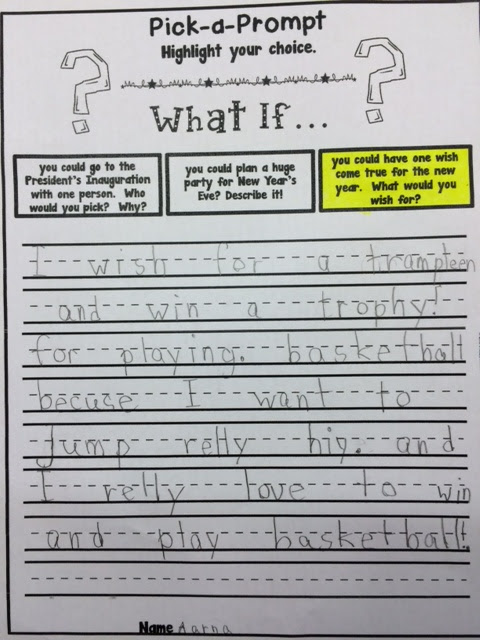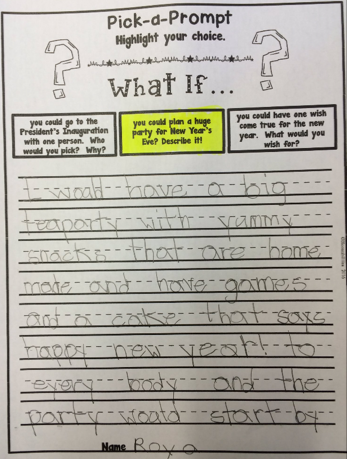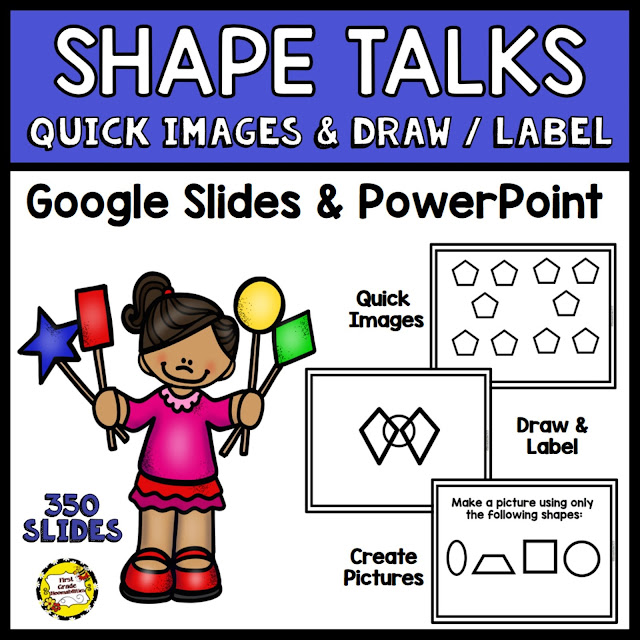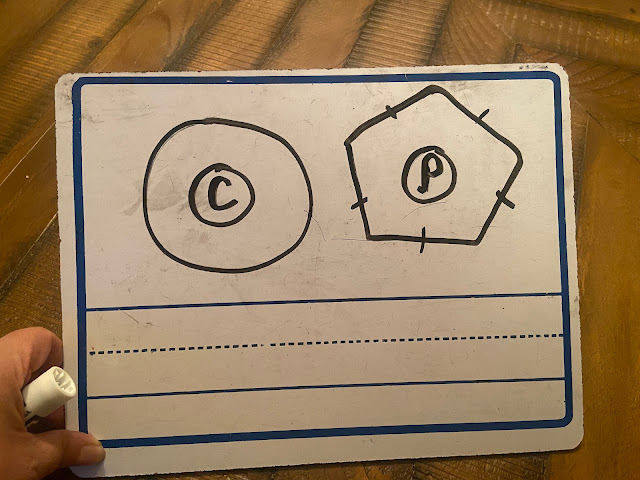If you know me or have read my blog for a bit, you know how much I love to teach writing. I suppose it's not a surprise since I'm also a children's author. My love for writing must be contagious because as much as I love teaching writing, my Fabo Firsties always seem
so focused during writing time and love to blow me away with their writing.
How lucky am I? I teach the interactive lesson, put on some
writing workshop music and we get down to business right away. We write so much in my class that I'm forever sharpening pencils!
But I can't take all the credit for their enthusiasm! It all starts in Kindergarten and our K teachers rock! They work their magic and by the time they enter my room, it's honestly a rare occasion that I hear, "I don't know what to write about." Many of us use some variation of this quote which connects the dots for our young writers and readers.
We use Lucy Calkins for writing and the kids must generate their own topics all the time. As much as I love that, I also wanted them to be able to respond to a given prompt. Since they use all of the Lucy Calkins strategies during their responses, I feel like it's a win-win situation!
I decided to make my own prompts so I could make sure I had monthly topics that meshed well with our curriculum. BUT, I still wanted to give the students some choice. SOOOOO....Pick-a-Prompts were born!
What are Pick-a-Prompts?
- Writing activities that give your students a choice in what they want to write about. There are 3 prompts on each page and everyone gets to choose the one that interests them the most. They will highlight their chosen prompt and respond.
- Varied writing opportunities since kids can often pick between stating an opinion, making lists, writing letters, songs, poems, write a How-To, etc.
- Themes related to the month so the writing naturally supports curriculum topics.
How Do I Use Them In My Class?
- In the beginning of the year, I don't run these two-sided. Once I sense kids need more writing space, I'll print two-sided with the back being the fully lined page that’s included in this packet. I always have extra lined-only pages run off for my voracious writers! I get quite a few two-three page responses in the later part of the year.
- As always, I model, model, and model again several of these before giving them out. We do as a class all throughout September and October. It makes such a huge difference in the quality they produce! The kids know that I won’t accept one word or sentence answers! The more I model and have kids share responses, the better the results are from the whole class.
- I always have some printed ready to go during this time in case a child wants to do one. Usually I have 6-8 kids that opt-in by October.
- If you walk into my room, you'll see several of these hanging up around the room. I also use these worksheets as homework once a week starting in January and the kids partner share responses during morning meeting the next day. Sharing responses allows the children to get to know their classmates a bit better and helps foster a stronger classroom community.
- I also use them for Do-Nows, Free Choice (I can even put same ones out because kids still have two unused options to pick from) and slip them into Fast Finishers folders. They've really come in handy during writing workshop too. I have a rule that during writing, we write. That's it. Finished a story? Write a new one! But I've realized that sometimes kids want to continue writing but starting another How-To or All About with ten minutes left of the period may not be ideal or could feel overwhelming. So, these fit the bill!
What's Included in Each Packet?
- 8 pages of prompts with 3 prompts per page. Students highlight their chosen prompt or simply put an ‘X’ on it and respond to that prompt.
- Two full lined pages to run on the back of the prompt for those students who need more space to write their response.
- All prompts are available with primary and secondary handwriting lines which make these appropriate for Grades 1-4.
- Writing topics for September include: Fall Fun, School Rocks, All About Me, Labor Day, School Rules, Grandparents' Day, Friends, and What If...?
Real Pick-a-Prompt Responses



These were from January packet. I'm in the process of tweaking all months a bit: fonts, clip art, and some of the prompts. The changes can be seen in the September and October covers above,
Here is one from
one of my Book-It Packets. Each Book-It gives a little support to the books teachers love and use all of the time. They feature the same 3 activities in each one: Pick-a-Prompt, Make-a-Word, and Retellings.
Want 3 free Book-Its that you'll love? They are an hour of meaningful work and you'll feel good about leaving them with a substitute.
Happy writing!

















































